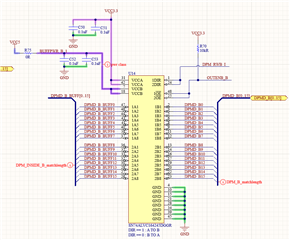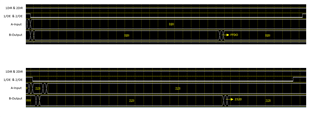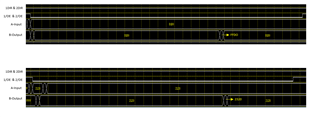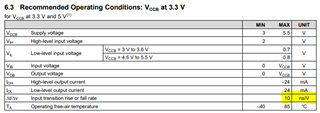In my design, SN74ALVC164245 is used to translate 3.3V 16-bit data to 5V 16-bit data. The component works fine for the most part but there are instances where the input doesn't match the output for some bits. Some of the examples are shown below. Is there an explanation for this? How can this be solved?


Thank you




